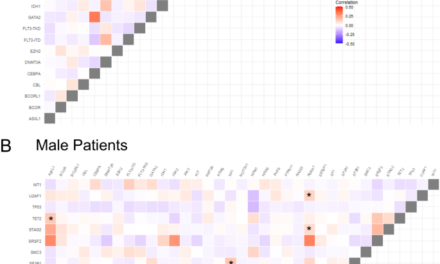
Study design
This is a prospective cohort study, using secondary nationally representative data from community-dwelling participants enrolled in the Costa Rican Longevity and Healthy Aging Study (CRELES, for its Spanish acronym) and the National Health & Aging Trends Study (NHATS).
The Costa Rican cohort (CRELES) is a longitudinal study based on a national sample representing older adults in Costa Rica. In the first stage, a random selection was drawn from the census of 2000, totaling 9,600 individuals 55 years of age or older, with an oversampling of the oldest old. In the second stage, a sub-sampling consisting of 60 Health Areas was selected; Health Areas are the administrative division units that are used for healthcare providing purposes. The sample covers 59% of the national territory. The sub-sampling for the longitudinal study originally included around 5,000 individuals from the census of 2000; of those, it was possible to locate and interview 2,827 out of 3,024 eligible individuals ages 60 and older, which resulted in a response rate of 93% [17]. Data collection consisted of in-person interviews and biomarker collection in the participant’s home conducted by professionally trained interviewers.
The US cohort (NHATS) is a panel study based on a national sample representing older adults receiving Medicare. The NHATS sample was age-stratified, with individuals selected from 5-year age groups between the ages of 65 and 90, and from individuals ages 90 and older. The study oversampled individuals at the oldest age group and Black older adults. Data collection consisted of in-person interviews in the participant’s home conducted by professionally trained interviewers. The first wave in 2011 contained data on 8,245 older adults and had a response rate of 71%.
This current study was restricted to community-dwelling older adults who were able to make self-reports without the need of a proxy respondent and who were ages 65+. It is restricted to community-dwelling respondents because frailty is expected to be more prevalent in non-community settings. It is restricted to participants who did not need a proxy respondent because exhaustion and unintentional weight loss, two measurements that are part of the frailty index, may be unreliable if based on a proxy report. Although CRELES interviewed participants starting at the age of 60, only participants 65 + were included for this study in order to make both cohorts comparable in terms of age.
From the initial cohort size for Costa Rica (n = 2,827), 334 participants were excluded because they were aged 60 to 64, and 703 participants were excluded because they were unable to complete the survey themselves and needed a proxy respondent. The resulting sample size in this study was n = 1,790 for CRELES.
From the initial cohort size for the United States (n = 8,245), 1,048 participants were excluded because they were living in a nursing home or a long-term care institution, and 517 participants were excluded because they were unable to complete the survey themselves and needed a proxy respondent. The resulting sample size used in this study was n = 6,680 for NHATS.
Physical frailty phenotype assessment
Frailty status was assessed by the five binary criteria of the PFP [8]: shrinking, exhaustion, low physical activity, muscle weakness, and slow gait. As some specific questions and measurements collected for CRELES and NHATS differed from each other and from the study on which the phenotype is based [8], we adapted the criteria definitions to make them comparable using the available data in both cohorts. Three out of five components of the PFP (shrinking, exhaustion, and low physical activity) were self-reports, whereas the other two (muscle weakness and slow gait) were objective measures of tasks conducted during interviews.
Shrinking was defined as self-report of unintentional weight loss of 5 + kg (11 + pounds) in the last 6 months for CRELES participants, or unintentional weight loss of 4.5 + kg (10 + pounds) in the last 12 months for NHATS participants. Exhaustion was defined as self-report of daily severe fatigue or exhaustion over the last year for CRELES participants, or low energy or exhaustion that limited their activities in the last month for NHATS participants. For CRELES participants, low physical activity was defined as not exercising regularly or engaging in vigorous physical activities (such as playing a sport, jogging, dancing or doing heavy work) at least three times a week during the last year. For NHATS participants, low physical activity was defined as not spending time in vigorous physical activities, such as working out, swimming, running, biking or playing a sport, in the last month.
Muscle weakness and slow gait were both operationalized as performance-based measurements of handgrip strength and gait speed. Muscle weakness was defined as being at or below the 1st quintile of handgrip strength, adjusted by BMI and sex. BMI categories were used as cut-off points. Weight and height measurements were used to estimate BMI for CRELES participants; whereas weight and height self-reports were used for NHATS participants since no measurements were conducted in that cohort. Slow gait was defined as being at or above the 4th quintile of time in the walking-speed test, adjusted by height and sex. Median height was used as the cut-off point for each cohort. People who needed to use a cane or a walker to perform the walking-speed test in NHATS were classified as slow.
For both muscle weakness and slow gait components of the PFP index, we classified participants as weak and slow when participants did not attempt to conduct the test for safety concerns, or when they attempted but were unable to complete the test. Previous studies have made similar methodological decisions as these types of missing values are likely to indicate poor performance and have been associated with mortality [18,19,20].
Participants were classified as frail if they met three or more of the PFP criteria, pre-frail if they met one or two criteria, and non-frail if they met none of the five criteria [8]. Cut-off points used for this study are included in Supplementary materials.
Mortality assessment
The primary outcome was all-cause mortality. For Costa Rican participants, follow-up was accomplished by linking their personal unique identification numbers to the Costa Rican Death Index. For US participants, the follow-up process was dependent on interviews conducted to the proxy informants of deceased participants. Month and year of death was collected for both cohorts. Participants were followed up since their baseline interview. A sensitivity analysis, excluding deaths that occurred within 12 months, was also performed in order to assess if survival bias associated with frailty categories was introduced. To avoid bias from COVID-19 related deaths, and to have comparable cohorts in terms of follow-up length, mortality follow-up time was right censored at 8 years from the date at baseline interview. CRELES baseline interviews were conducted primarily in 2005, but the complete round of baseline interviews took place between 2004 and 2007. Therefore, censoring in CRELES occurred between December 2012 and December 2015. NHATS baseline interviews were conducted in 2011, therefore censoring occurred in December 2019, before the beginning of the COVID-19 pandemic in 2020.
Covariates
In addition to frailty, we used the following self-reported variables at baseline to adjust for sociodemographic characteristics and health behaviors that are proximate determinants of mortality variation: age, sex, education level, economic vulnerability, race and ethnicity, living in a metropolitan zone, marital status, and smoking. Those variables that may have a causal relationship with frailty, such as chronic conditions, were not included in the mortality models. Similarly, those variables that are in the causal pathway between frailty and mortality, such as falls, hip fracture, and hospitalizations, were not included in order to avoid overcontrolling. We measured age by 5-yr age groups and used a continuous variable in the multivariate models. Sex had two categories: female or male. Education level was categorized as low, medium or high. For Costa Rican participants these three education levels respectively corresponded to: complete elementary school or lower, incomplete high school, and complete high school or higher. Because of the educational attainment of Costa Rican older adults, this is the typical approach to categorize education in the Costa Rican context. For US participants these three education levels corresponded to: incomplete high school or lower, complete high school or college education without obtaining a degree, and bachelor’s degree or higher.
Economic vulnerability was a dichotomous variable. Similar to previous studies, economic vulnerability was defined as a total income < 100 USD per month per person in 2014 USD for CRELES participants [21]. Also similar to previous studies, being a recipient of Medicaid was used as a proxy for economic vulnerability for NHATS participants, because this insurance is only available to older adults with low income and few assets [22]. Although race is known to be an important determinant of health outcomes in the US, it is not a health determinant in Costa Rica – indeed, race is not collected in Costa Rican population surveys. Therefore, only for the US model, race and ethnicity was used as a covariate and an interaction between frailty and race was introduced in order to assess whether race and frailty combinations had a modifying effect on mortality. We dichotomized race as White vs. all other race/ethnicity because of power issues when interacting with the frailty measurement. Living in a Metropolitan zone was also a dichotomous variable. Marital status was dichotomized as being married or in domestic partnership vs. not. Smoking behavior was dichotomized as being a current smoker at baseline.
Statistical analysis
Characteristics of both populations at baseline are shown as relative frequencies (%). Differences in baseline characteristics between cohorts were tested using the χ2 test. Cox proportional hazards models were used to assess the association between frailty (measured in 3 categories), and all-cause mortality for each cohort. The appropriateness of the Cox models was checked by log-log plots. Models were fully adjusted, and survey weights were used. Analyses were performed using statistical software Stata 17 [23]. Statistical significance was set at p-value < 0.05.




